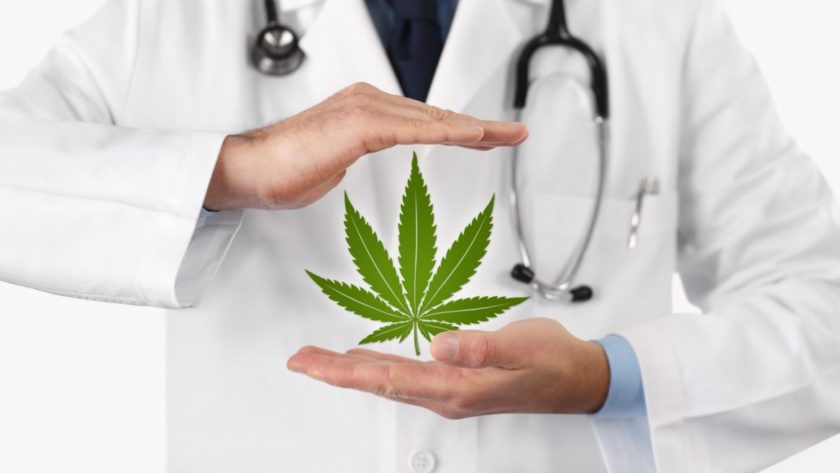For many of us, marijuana is associated with something dangerous, threatening, addictive, and bringing high risks of either physical or mental illnesses.
Being notorious for such consequences, the positive remedial effect of cannabis is often questioned. Many people claim that marijuana cannot be considered as medical mean at all.
In contrast, in more and more countries nowadays, medical marijuana is being legalized. This wave of ‘trust’ to cannabis cannot be just hype; it is conditioned by its characteristics and numerous scientific researches done on this topic.
WHAT IS THE EXPERTS’ OPINION?
FDA (U. S. Food and Drug Administration) has approved the use of marijuana for the treatment of two types of epilepsy, both of which are quite rare, but severe.

The other permitted cannabinoid medicines are human-made, and they are dronabinol (Marinol, Syndros) and nabilone (Cesamet). They were developed to treat nausea and vomiting from chemotherapy. They are Dravet syndrome and Lennox-Gastaut syndrome.
DEA (Drug Enforcement Administration) has scored cannabis up to the “Schedule I” group, which means that this drug has the excessive potential for abuse.
When time passes and more researches are done, it might happen that marijuana would be reclassified to “Schedule 2” or “Schedule 3” type.
WHAT IS MEDICAL MARIJUANA?
If we are talking about medical cannabis, it is nor some other sort of the plant, it is just some extracts, special chemicals, of marijuana plants, which could be used to cure some diseases or at least a couple of conditions, which follow the disease.
Out of one hundred different chemicals called cannabinoids contained by the marijuana plant, doctors prefer to use delta-9-tetrahydrocannabinol (THC) and cannabidiol (CBD) for medical purposes.
These extracts might be in the form of liquid, pills, or whatever to be eaten with food or consumed with the dry herb vaporizer (click for more info). THC is responsible for making people “high” after consuming marijuana, and CBD is less harmful to a person.
WHAT MAKES PEOPLE USE CANNABIS IN MEDICAL FOR THE PURPOSES OF TREATMENT?
The answer to this question is not easy, because some doctors prescribe cannabis, some not; some people decide to start using it on their own.
However, we can list the most common indications for use: wasting syndrome (cachexia), nausea, multiple sclerosis, mental health conditions like schizophrenia and posttraumatic stress disorder (PTSD), HIV/AIDS, glaucoma, epilepsy, eating disorders such as anorexia, Crohn’s disease, congenital disorders (physical or mental anomalies or malformations, such as Ehlers-Danlos Syndrome or Nail Patella syndrome), cancer, Alzheimer’s disease, etc.
The problem here is that it was not officially proved that cannabis helps to cure all these diseases, some conditions – yes, but the disease – it is still the question. As marijuana can relieve pain, nausea, and things like that, it might have a therapeutic effect on different health problems.
IS MARIJUANA THE PATH TO PRISON?
It depends. If we talk about the United States of America, medical cannabis is allowed in the District of Columbia and 33 states (Alaska, Arizona, Arkansas, California, Colorado, Connecticut, Delaware, Florida, Hawaii, Illinois, Louisiana, Maine, Maryland, Massachusetts, Michigan, Minnesota, Missouri, Montana, Nevada, New Hampshire, New Jersey, New Mexico, New York, North Dakota, Ohio, Oklahoma, Oregon, Pennsylvania, Rhode Island, Utah, Vermont, Washington, West Virginia).
In some states (such as Alabama, Georgia, Iowa, Kentucky, Mississippi, Missouri, North Carolina, South Carolina, Virginia, Wisconsin, and Wyoming) the only restricted use is allowed.
If we talk about other countries, it is better to check firstly, and then try to use cannabis, because in some countries the punishment for marijuana usage is strict.
WHAT FORMS CAN CANNABIS BE TAKEN IN?
Even though marijuana as such is illicit substance, the culture of taking it is widely developed. People learn many exciting ways to consume the plant for different reasons.
Cannabis could be presented in forms of food (the extract could be put into chocolate cake, a candy or whatever), special liquid (just as cough syrup or set well), special mode (a body lotion, oil, spray or even cream), and substance for smoking or vaping (leaves, powder, liquid).
In the modern world, the most popular is the last option, people often use special cannabis powder or simple leaves for dry herb vaporizer or pure vape liquid with the extracts of cannabis for the herbal vaporizer.
The way you take marijuana also influences the effect; that is why, in some cases, it is better to eat marijuana brownie than to use a marijuana vape pen.
The impact of weed vaporizer is quick and not so long-lasting as the effect of taking cannabis directly into your stomach.
WHAT ARE THE HIDDEN ROCKS OF TAKING CANNABIS?
As with any other medication, medical cannabis might have some side effects. All of you would guess that the most severe ‘side effect’ is continuous drug abuse.
The list of the most common side effects includes inadequate coordination, bloodshot eyes, depression, dizziness, fast heartbeat, hallucinations, low blood pressure, mental disorders, etc.
The possibility of the appearance of these effects depends on different factors, such as personal characteristics of the patient (age, gender, health conditions, living conditions, etc.) and the type of usage (e. g., as cannabis, contains some same chemicals as tobacco, smoking it can harm lungs).
In some cases, the use of medical cannabis inevitable because the symptoms of several diseases are challenging to bear. Remember the risks and be reasonable.
[wp_ad_camp_1]

